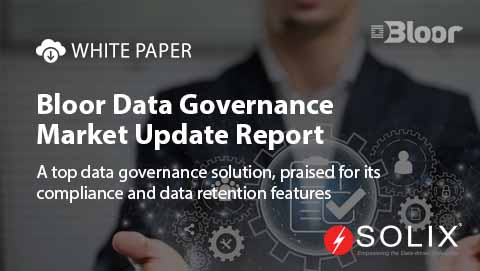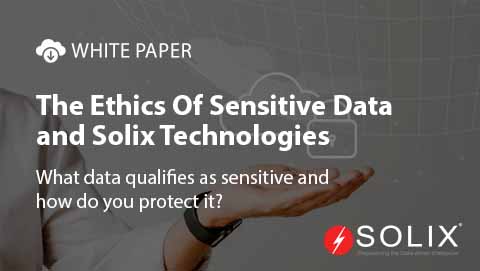Data Catalog Automation What You Need to Know
When it comes to managing massive datasets, one question looms large how can I effectively automate my data catalog to make sense of it all The answer lies in data catalog automation, a streamlined process that helps organizations connect, discover, and understand their data assets more efficiently. In this post, Ill walk you through what data catalog automation is, why it matters, and how it can transform your data management strategyall while making it as accessible as possible for you.
Understanding Data Catalog Automation
Data catalog automation is the process of using technology to create, manage, and update metadata repositories automatically. Essentially, it simplifies the process of documenting data assets, which can be painstakingly manual if done without automation. Imagine trying to categorize a library filled with booksit would take ages if you had to do it solely by hand! With automation, however, this daunting task becomes manageable, efficient, and far less time-consuming.
Why Is Data Catalog Automation Important
The value of data catalog automation cannot be overstated, especially in todays data-driven world. Every day, organizations produce and collect vast amounts of data. Without an automated system in place, keeping track of where everything is stored, how it can be accessed, and its lineage can lead to significant inefficiencies and risks. Automation not only simplifies this process but empowers teams to harness data assets effectively, providing insights that can drive decision-making.
For instance, when I was managing a team that was knee-deep in a data-heavy project, we struggled with maintaining our data catalogs. It wasnt long before we realized that half our time was spent just trying to locate the right data. After implementing an automated data catalog solution, we not only found the information we needed faster but were also able to spend more time on analysis and strategy rather than retrieval.
How Does Data Catalog Automation Work
The mechanics of data catalog automation typically rely on tools that leverage metadata to index and catalog data assets. This means that as data enters your system, the automation tool works in the background to classify, tag, and organize it according to predefined criteria. Using artificial intelligence and machine learning, these tools can even learn from your data usage patterns and suggest improvements over time.
For example, if your data catalog identifies frequently accessed datasets, it can prioritize them, making retrieval even more efficient. This proactive approach to data organization is instrumental in reducing the time spent by data analysts and data engineers to search for and understand datasets.
Integrating Data Catalog Automation into Your Workflow
To successfully integrate data catalog automation into your existing workflow, follow these actionable steps
- Assess your current data landscape Before you can automate anything, you need to understand what data you have and where its stored.
- Select the right automation tool Look for solutions that fit your organizations needs and budget. Specifically, a solution like Solix Data Management Platform can streamline your cataloging efforts.
- Define metadata standards Establish what metadata is important for your organizationthis will guide how data is categorized.
- Train your team Ensure that your team understands how to use the automated systems effectively. Without engagement from your staff, even the best tools can fall short.
Overcoming Common Challenges
Transitioning to data catalog automation isnt without challenges. Many organizations face resistance to change, concerns about data governance, or issues integrating with existing systems. To overcome these hurdles, transparency is key. Keep communication open and show your team the benefits through real-life examples and training sessions.
For instance, when we switched to an automated system, I created a detailed presentation outlining the time saved and the increased ability to manage data quality. Engaging the team with tangible results helped to alleviate their concerns and foster collaboration. Additionally, reaching out to vendors like Solix for support can ease the integration process, helping you avoid common pitfalls.
The Role of Solix in Data Catalog Automation
In the realm of data catalog automation, partnering with a capable provider can make all the difference. Solix offers a comprehensive suite of tools designed to automate and optimize data management processes. Their solutions focus on scalability, enabling organizations of any size to streamline their data catalogs effectively.
One particular offering from Solix, the Solix Enterprise Data Management, combines the power of data catalog automation with robust management features, making it easier for you to derive insights from your data.
Lessons Learned and Final Thoughts
From my experience, implementing data catalog automation can seem daunting, but the payoff is well worth it. Every organization is unique, so its essential to adapt strategies that cater specifically to your teams needs. As you embark on your automation journey, remember that the goal is not just to digitize processes but to enhance the quality and accessibility of your data.
In summary, investing in data catalog automation equips your organization with the agility needed to thrive in a data-centric world. If youre interested in learning more about how data catalog automation can work for your organization, I encourage you to reach out to Solix. Their expertise in this area can guide your implementation and ensure your data management becomes more robust than ever.
Contact Solix for More Information
If you have further questions or need personalized support, dont hesitate to contact Solix at 1.888.GO.SOLIX (1-888-467-6549) or through their websiteThey are ready to assist you with your data catalog automation journey!
About the Author
Sophie is a data enthusiast with extensive experience in data management and catalog automation. She enjoys sharing insights from her journey to help others navigate the complexities of data organization and governance. Data catalog automation, she believes, is the future of efficient data management, and she aims to empower organizations to embrace it.
Disclaimer The views expressed in this blog post are the authors own and do not represent the official position of Solix.
Sign up now on the right for a chance to WIN $100 today! Our giveaway ends soon‚ dont miss out! Limited time offer! Enter on right to claim your $100 reward before its too late!
-

-

-
 On-Demand Webinar
On-Demand WebinarThe Power of Less: How Data Minimization Drives Data Privacy Compliance
Watch On-Demand Webinar
